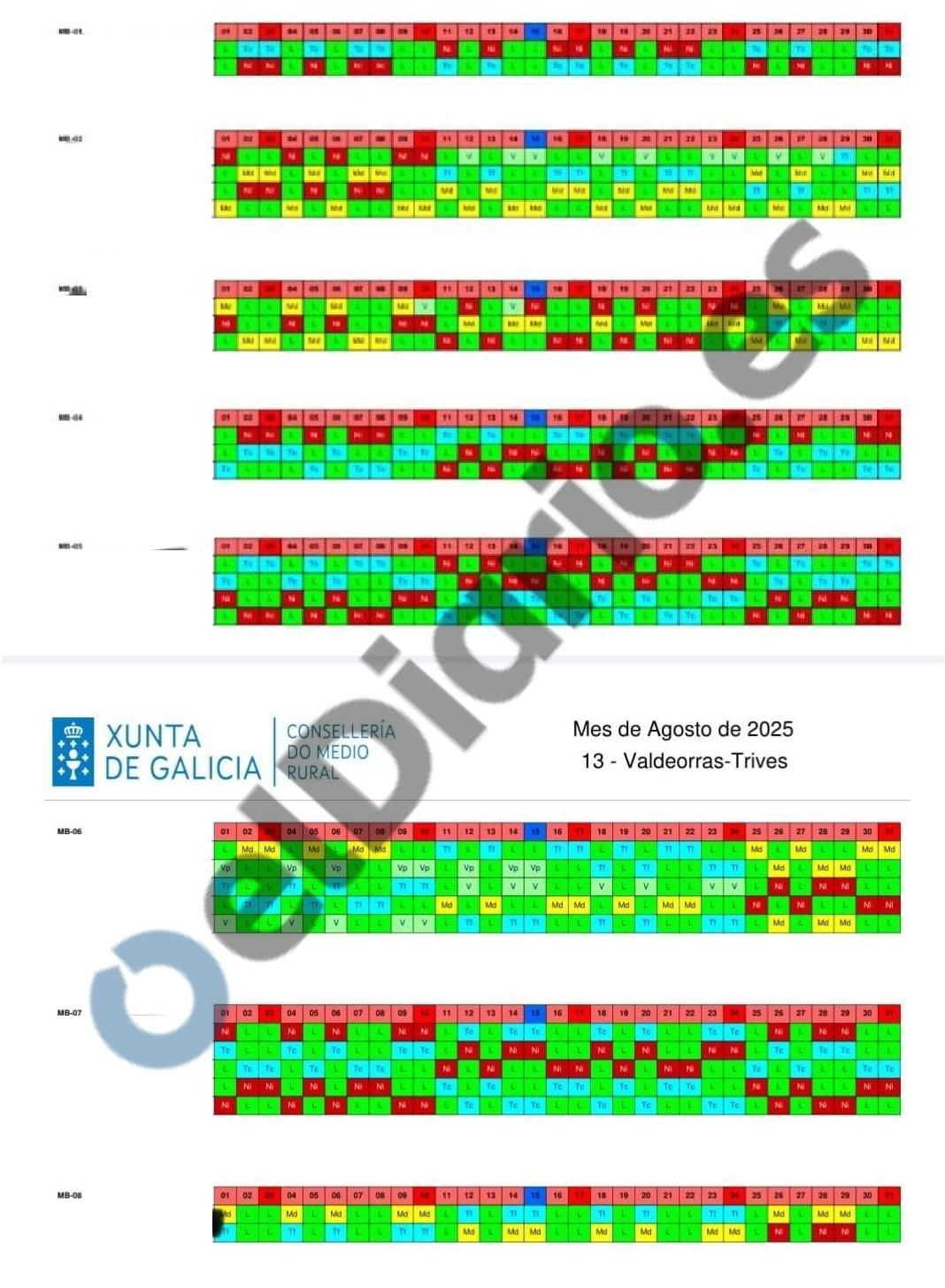“Many things are being said that they are not true these days.” The president of the Xunta, Alfonso Rueda, thus dispatched from Quiroga (Lugo) the information of eldiario.es who assured that the Galician executive claims to the government the sending of 30 motobombs to deal with the wave of fires while keeping parked in the garage, for hours and even whole days, a good part of the 380 that are part of their own device. However, the quadrants of the prevention servizo and defense against Forestais fires (spif) of Ourense confirm that reality. eldiario.es has had access to planning for the month of August of Forest District XIII, that of Valdeorras-Trives, where they still fight against the greatest fire in the history of Galicia, and it is clear that only four of its eight motobombs, half, have been working to full performance.
The quadrant with the planning of the month was sent to the workers of the district on July 30, in the time of maximum risk and less than two weeks before the Xunta decreed situation 2 for the entire province. It see the distribution of the turns of the eight motobombs-directed as MB-01, MB-02 … to MB-08— and, also, the difference in the number of troops assigned to each of them. While the motor pumps 06 and 07 have five possible drivers, 02 and 05 are four, 03 and 04, three and 01 and 08 only two. That will be key when they can operate once the shifts and libranzas (marked in green with an L in the quadrant).
The shifts, according to Óscar Rodríguez, gang chief and delegate of CCOO in that district, are 10 hours, but in exceptional situations such as that of this fire wave, they can extend to twelve. So it is necessary that every day there are at least two operational drivers to take full advantage of the vehicle. The quadrant shows how, in four of the motobombs, there are days with a single active driver – so it can only be used for half a day – and even with none, which forces them to leave them parked, without being able to collaborate in the extinction work.

An example, on August 12, when situation 2 in the province was declared. That day, the two drivers of the MB-01 were free, so the planning established that the vehicle remained in the garage. Nor did two of the three drivers assigned to the MB-04 work that day, so it could only work during one of the shifts. Following the quadrant, it is clear how the two motobombs with two chaufferes (01 and 08) coordinate so that one of the two is always operational. Three pilots, 03 and 04 do the same for one full -time and the other with just one turn.
With this program, two of the motobombs (01 and 08) work, alternately, only for half a month and the other two (03 and 04) leave without covering one in four shifts. De facto, it assumes that the district really starts the maximum risk season – that, according to the Xunta, the device operates 100% -, with six and a half vehicles, that is, almost 20% below the possible operational capacity.
According to Rodríguez, this situation is not punctual and is repeated similarly in each of the nineteenth forest districts of Galicia, although it could improve in a remarkable way in the next few days. The CCOO delegate recalls that on August 15, with 40,000 hectares already burned in the province, Rural Environment made two new calls, the numbers 16 and 17 of this year, to cover the almost 200 vacancies that the unions had been denouncing since the start -up of the operation of this summer.
Still Thursday, Alfonso Rueda denied those structural deficiencies and insisted that the call sought to cover “the casualties that have been produced” since the device began to work. Waiting for these incorporations, which the Galician President announced as “immediate,” Rodríguez hopes that a part of them will be used to cover the pending plates of driver and driver-mechanical motobomb and that allows to compensate for some of the many green boxes that are still in the quadrant until ending August.